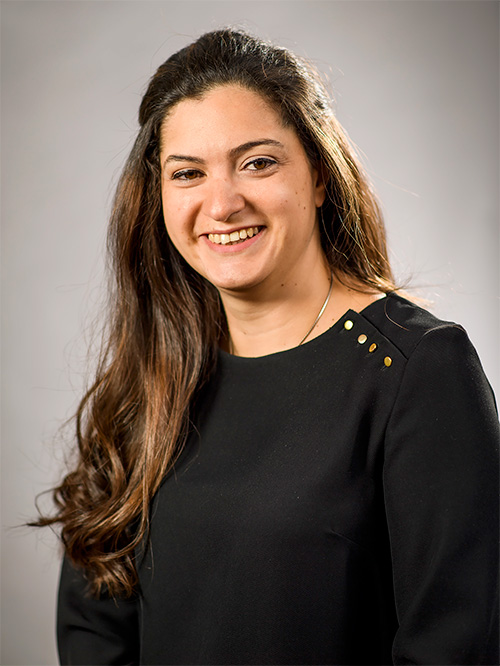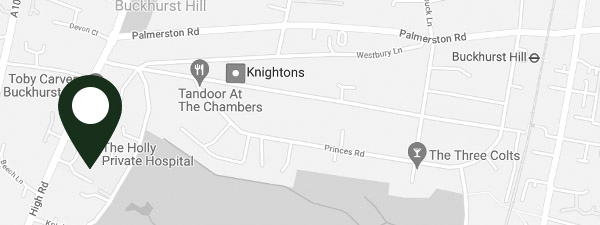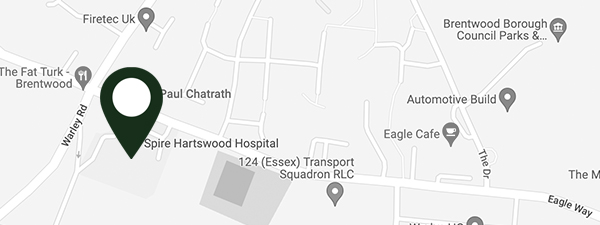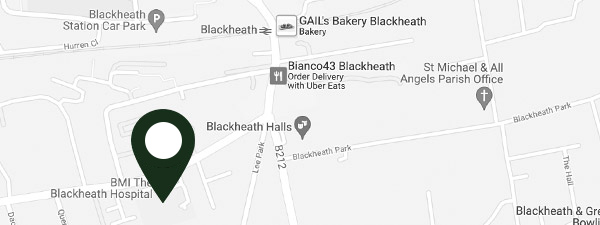Address a host of corneal eye conditions with corneal grafts in Hertfordshire, Essex and London
Discover how corneal transplantation can help you restore your deteriorating eyesight
Address a host of corneal eye conditions with corneal grafts in Hertfordshire, Essex and London
Discover how corneal transplantation can help you restore your deteriorating eyesight







We can guide you through the process of having a corneal transplant
Corneal transplants and corneal grafts are helpful for keratoconus, degenerative conditions, and less common corneal conditions
Here’s how a corneal transplant works
At the front of the eyeball is the cornea, which is a clear outer layer. It is the window that allows light to enter the eye so that you can see.
Through the cornea, we can see the coloured iris and the pupil (the black gap in the centre of the iris).
At the back of the eye is the retina (a light-sensitive film). The cornea helps to focus light rays through the pupil and on the retina. Like a camera, upon receiving this “picture,” the brain interprets it.
A damaged cornea can become less transparent or change shape.
That can prevent light from reaching the retina and cause the picture transmitted to the brain to become distorted or unclear.1https://www.nhs.uk/conditions/cornea-transplant/
When a cornea is irreparably damaged, you may need a corneal graft. There are three types, and we discuss them below.
Who is suitable for a corneal graft?
We can treat keratoconus, degenerative conditions, and less common corneal conditions which cause your cornea to become thinner with corneal transplants and corneal grafts.
People with damaged corneas often undergo cornea transplants to restore their vision.
In addition to relieving pain associated with corneal diseases, corneal transplants can also alleviate other signs and symptoms.
We can perform a cornea transplant to treat many conditions, including:
- Cornea scarring, caused by infection or injury
- Swelling of the cornea e.g post-cataract surgery
- A cornea that bulges outward (keratoconus)
- Corneal ulcers not responding to medical treatment
- Fuchs’ dystrophy (a hereditary condition)
- Problems caused by previous eye surgery
- Tearing or thinning of the cornea
We cater for a variety of corneal eye conditions with corneal grafts, each working slightly differently. There are different types of corneal grafts according to which layer of the cornea is diseased, they are:
- Penetrating keratoplasty (PK)
- Deep anterior lamellar keratoplasty (DALK)
- Endothelial keratoplasty (EK, also known as DSAEK or DMEK)
Penetrating keratoplasty (PK)
Full-thickness corneal transplantation, known as a PK (penetrating keratoplasty) involves removing a circular disk-shaped portion of the cornea and replacing it with a donor cornea of a similar size. This is used for corneal diseases that involve all layers.
Deep anterior lamellar keratoplasty (DALK)
Partial-thickness corneal transplantation, known as a DALK (deep anterior lamellar keratoplasty) involves replacing part of your cornea with a healthy layer of corneal tissue from a donor. This is used for corneal diseases that involve anterior part of the cornea e.g keratoconus, anteior corneal scarring.
Endothelial keratoplasty (EK, also known as DSAEK or DMEK)
Partial-thickness corneal transplantation, know as DMEK (Descemet’s membrane endothelial keratoplasty) involves replacing part of your inner layer of cornea with a healthy layer from the donor. This is used for disease that involves the inner part of the cornea e.g fuchs endothelial dystrophy and post- cataract corneal oedema.
A corneal transplantation can help restore your deteriorating eyesight.
Advantages
The cornea transplant procedure can restore vision, relieve pain, and improve the appearance of a diseased or damaged cornea.
Disadvantages
The most common complications of corneal transplants include rejection of the transplanted cornea, infection of the eye, and complications associated with stitches.
The vast majority of cornea transplant procedures are successful. Nevertheless, as with any type of surgery, there is a slight risk of complications.
Rejection of the donor tissue is the most serious complication after a corneal transplant, other risks include the new cornea being rejected by the body, infection and further vision problems. The incidence of rejection decrease in Lamellar keratoplasty.
In most cases, corneal transplants are successful and will last for at least 10 years without causing complications.
Other risks
- Glaucoma
- Infection
- Bleeding
- Vision loss ( rare)
- Need for further intervention
We consider alternative options for treating discomfort and pain when we cannot transplant corneas.
Various treatment options available in such cases include:
- phototherapeutic keratectomy,
- bandage contact lenses,
- conjunctival flaps,
- amniotic membrane transplantation,
- anterior stromal puncture,
- and hypertonic saline eye drops.
Before cornea transplant surgery:
- During the exam, your eye doctor will assess whether there are any conditions that might complicate recovery following surgery.
- We’ll measure your eye. Based on your eye doctor’s measurements, you will be prescribed the right sized donor cornea.
- We’ll need to review all medications and supplements you are taking. You may need to stop taking certain medications and supplements before or after a corneal transplant.2https://www.mayoclinic.org/tests-procedures/cornea-transplant/about/pac-20385285
- You may not be able to have a successful cornea transplant if you require treatment for other eye problems such as infection or inflammation. These problems will be treated by your eye doctor before your surgery.
Steps in Penetrating keratoplasty (PK)
- We perform the operation under general or local anaesthetic and takes about one hour.
- We create and remove a central 8mm button of your cornea and stitch a similar-sized button of the donor cornea with tiny stitches. You cannot feel these and they are invisible.
- We send the removed abnormal cornea to a pathology laboratory for examination under a microscope.
- We will usually examine you after the surgery.
- You can generally go home the same day.
- We will see you again within one week in the outpatient clinic and regularly thereafter (approximately six visits in the first year).
- We generally recommend that you take two weeks off work but please discuss your individual circumstances with your doctor.
- You will need to use anti-rejection eye drops for at least six months and indefinitely in some cases.
- We may remove individual stitches from three months after the operation, but we will not completely remove stitches until at least one year after the procedure.
Steps in Deep anterior lamellar keratoplasty (DALK)
- We perform the operation under general or local anaesthetic, and takes about one hour.
- We remove a central partial thickness 8mm button of your cornea and stitch a similar-sized button of the donor cornea with tiny stitches. You cannot feel these and they are invisible.
- We send the removed abnormal cornea to a pathology laboratory for examination under a microscope.
- We will usually examine you after the surgery.
- You can generally go home the same day.
- We will see you again within one week in the outpatient clinic and regularly thereafter (approximately six visits in the first year).
- We generally recommend that you take two weeks off work but please discuss your individual circumstances with your doctor.
- You will need to use anti-rejection eye drops for at least six months and indefinitely in some cases.
- We may remove individual stitches from three months after the operation, but we will not completely remove stitches until at least one year after the procedure.
Steps in Endothelial keratoplasty (EK, also known as DSAEK or DMEK)
- We usually perform the operation under local anaesthetic and it takes about one hour.
- Through a small incision (opening), we remove your endothelium and insert a disc of donor endothelium.
- We press the disc in position against the back of your cornea by a bubble of air.
- You will usually need to lie flat for one to two hours after the operation.
- We often use one or two stitches in the cornea. We easily remove these in clinic in the weeks after the operation.
- We will usually examine you after your surgery.
- You can generally go home the same day.
- We will see you again within one week in the outpatient clinic to assess whether the graft has remained in position.
- You will have about six visits to the outpatient clinic in the first year.
- We generally recommend that you take two weeks off work but please discuss your individual circumstances with your doctor.
- You will need to use antirejection eye drops for at least six months and indefinitely in some cases.
Risks
The best time to discuss risks of each different type of corneal transplant procedure is at a consultation. In summary, however, rare but serious complications include:
- Sight-threatening infection (1 in 1,000).
- Severe haemorrhage causing loss of vision.
- Retinal detachment.
- Severe inflammation or other rare causes of vision loss.
- Graft failure.
- Your immune system may reject the corneal transplant. We will monitor you for symptoms of rejection, and likely recommend a regraft should it become necessary.
- EK has a risk of graft dislocation
Depending on the type of corneal transplant you have, the recovery time will vary.
Typically, it takes about 18 months to enjoy the results of a full-thickness transplant (PK), although glasses or contact lenses are usually available much sooner.
When only the outer and middle layers (DALK) are replaced, the recovery is usually faster.
The recovery time for endothelial transplants (EK) is most commonly a few months or even weeks.
To have a good chance of recovering from an eye procedure such as a corneal grafts, it’s important to:
- Not rub your eye and avoid activities such as contact sports and swimming until your doctor says it’s okay.
- Avoid strenuous exercise and heavy lifting during the first few weeks after surgery.
Give your eyesight a lift to a new level
Don’t let cataracts, glasses or keratoconus get in the way of your life. Instead, contact us today and discover how you can elevate your vision and life to a new standard.
If you can find your challenge below, then we can elevate your vision to a new standard
Choose the option below that sounds most like you

Your vision is yellowing and hazy
Do you have hazy and cloudy vision (even with glasses)? Do colours appear less vibrant? Are you finding it harder to drive or see at night? If you answered yes to any of these questions, it’s possible that you have a cataract.
Did you know that you can get restored clarity (and the need for glasses?). It’s true, you can have both solutions in one with lifestyle cataract surgery.
You don’t want to live with glasses or contacts
Wish for a life free from glasses or contact lenses? Are they making life inconvenient for you or getting in your way? We appreciate how it feels to have to deal with the constant hassle of visual aids.
Vision correction surgery can help you ditch your specs and discover the freedom you’ve been missing.

You have a troublesome eye condition
Besides decreasing quality of life, eye conditions can cause anxiety. Whatever your particular eye condition, we can help you get an accurate diagnosis and a proven treatment plan.
Let us help you move forward with your life by guiding you towards the right eye treatment for your specific issues.
Trade up your eyes in 3 easy steps
Give your eyes a lift to a whole new level


Get In Touch
The first step to restoring your vision or solving your eye condition is to give our friendly team a call. Get the ball rolling calling on 020 4509 8700 or use our easy online form here.


We’ll Meet Locally
We can see you at one of several convenient locations near you. At your assessment, we’ll listen to your concerns, thoroughly assess your eyes and then recommend the best treatment to solve your visual concern.


Upgrade Your Life
After treatment, patients are often surprised by how much their life changes. Visual improvements often bring a newfound sense of freedom, a restoration of youthful function (like reading again over the age of 45, without glasses!), and a refreshed peace of mind.
Academic resources on Corneal grafts
Learn more about corneal grafts from authoritative sources
This paper encompasses symptoms, causes and factors involved in treating Corneal Disease. Click here to read more.
Corneal disease refers to problems with the cornea, the clear layer in the front of the eye. There are many types of corneal disease with different causes and the signs and symptoms of corneal disease depend on the type of corneal disease and the specific cause. Click here to read more.
A Corneal disease results in the breakdown of a protective barrier, leaving the eye vulnerable to infection, inflammation and injury. Click here to read more.
★★★★★
Hundreds of happy patients in Hertfordshire, Essex and London
Now they live life with more freedom, comfort and confidence

“Silvana Madi was very professional. She explained everything about the condition of my eyes and how the procedure would go ahead, as well as everything that would happen in the weeks following my procedure. She was very confident in her professional role.”
Loughton

“Ms Madi was excellent with explaining the procedure and being reassuring at all times. Great carer. Her staff explained everything to me clearly and the following morning I had a wonderful clear vision and the colours of everything I saw was amazing.”
London

“Ms Madi was reassuring as I was very nervous. I felt at ease. Ms Madi was reassuring as I was very nervous. I felt at ease.”
Essex

“My surgeon, Miss Silvana Madi, took great care to obtain the optimum result for me which has exceeded my expectations. I was a very nervous patient but Miss Madi and all her staff helped me overcome my anxieties. I couldn’t have asked for more care and attention.”
Essex

“Silvana Madi was very professional. She explained everything about the condition of my eyes and how the procedure would go ahead, as well as everything that would happen in the weeks following my procedure. She was very confident in her professional role.”
Loughton

“Ms Madi was excellent with explaining the procedure and being reassuring at all times. Great carer. Her staff explained everything to me clearly and the following morning I had a wonderful clear vision and the colours of everything I saw was amazing.”
London

“Ms Madi was excellent with explaining the procedure and being reassuring at all times. Great carer. Her staff explained everything to me clearly and the following morning I had a wonderful clear vision and the colours of everything I saw was amazing.”
Essex
We have replaced the images of real patients who provided these testimonials to protect their privacy
Find out if you can have LASIK or SMILE
Take 5 minutes to see whether either of these life-changing eye procedures might suit you to free yourself from glasses and contact lenses.
Expert cataract, laser eye surgery and cornea specialist in Hertfordshire, Essex and London
Silvana Madi is here to guide you every step of the way

Silvana Madi
MD, PhD, FRCOphth, CERTLRS
Consultant Ophthalmic Surgeon
Silvana Madi is a consultant ophthalmic surgeon specializing in laser eye surgery, corneal disease treatment, and traditional and lifestyle cataract surgery. She has over 10 years of experience in ophthalmology that includes:
- performing combined cataract surgery and glaucoma treatment (MIGS) to reduce glaucoma eye drop dependency.
- an abundance of experience in glaucoma management, including high-risk and complex cases.
- the most up-to-date practices in corneal transplants to improve quality of vision
- all corneal surgeries including intracorneal rings (INTACs) or PTK to help patients with keratoconus reduce dependence on their glasses
- over 15000 procedures to restore vision, remove dependency on glasses and optimise visual health.





